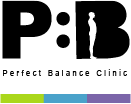Understanding Joint Hypermobility
Joint hypermobility syndrome, often referred to as hyperlaxity or being double-jointed, is a condition that presents with unusually flexible joints capable of extending beyond the typical range of motion. This condition is often genetic, affecting the collagen that forms ligaments and tendons, making them more pliable and sometimes weaker. It is more prevalent in children and teenagers, and in people assigned female at birth (AFAB), as well as those of Asian and Afro-Caribbean descent.
The Role of Exercise in Managing Joint Hypermobility
Exercise plays a crucial role in managing joint hypermobility syndrome. Specific exercises can help improve stability and strength, which are key to managing this condition. Here are some exercises that are particularly beneficial:
- Side Plank: Lie on your side and form a bridge between your feet and forearms by lifting your pelvis. This exercise works the abdominal and oblique muscles. Hold this position for 30 seconds, twice each side.
- Plank: Rest on your forearms and your toes. Hold this position. Keep good straight posture, and do not let your back arch too much. This is a core strengthening exercise. Hold this position for 30 seconds, and repeat three times.
- Full Squat with Overhead Press: Open your legs slightly wider than shoulder width, and bend your knees to the full squat (90 degrees) position as you lift a medicine ball above your head. Pay attention to the positioning of your kneecap, ensuring it stays centred with the middle toes of your foot. Keep your feet firmly planted on the ground, avoiding any elevation of the heels. Repeat 10 reps, three times.
- Horse Stance Horizontal: Go on to all fours, and keep good posture. Draw your tummy inwards (towards the ceiling). Straighten your arm in front of you, and your opposite leg behind you. Repeat each side. This is a great core stability and core control exercise to work the deep abdominal muscles. The exercise will also strengthen the lumbar erector and gluteal muscles. Hold this position for 15 seconds, twice each side.
- Dead Bug: Lie flat on your back. Raise your arms to 90 degrees in front of you, so your hands are pointing towards the ceiling. Bend your knees and hips to 90 degrees. Engage your deep abdominal muscles and maintain a neutral spine. In a controlled movement, lower one arm to the floor above your head, while you lower the opposite leg to the floor in a straight position. Do not let your lower back arch too much, try to flatten your spine gently towards the floor. Return to the start position. Repeat to the opposite side. This exercise is a core strengthening and coordination exercise. Hold this position for 30 seconds, and repeat three times.
Top Tips for Exercising with Joint Hypermobility
When exercising with joint hypermobility, it’s important to keep the following tips in mind:
- Be mindful of your body’s capabilities: Being aware of your body is of utmost importance. Understand that your joints can move beyond the typical range and exercise caution to prevent overextension during your workout routines.
- Give importance to a suitable warm-up: Paying attention to a well-rounded warm-up routine is crucial as it readies your body for physical activity and mitigates the likelihood of injuries. This holds special significance for those with hypermobility, considering their joints may be more vulnerable to harm.
- Centre your efforts on enhancing stability: Concentrate your efforts on exercises that improve stability, as they play a crucial role in strengthening the muscles around your hypermobile joints. This enhanced stability helps safeguard the joints, minimising the risk of injury.
- Opt for low-impact alternatives: It is advisable to avoid high-impact exercises that impose significant strain on your joints. Instead, choose low-impact activities like swimming or cycling, which offer a more joint-friendly workout option.
- Cool Down and Stretch: After your workout, take the time to cool down and stretch. This can help prevent stiffness and promote flexibility.
- Listen to Your Body: If an exercise causes pain, stop doing it. It’s important to listen to your body and not push through pain, as this can lead to injury.
Conclusion
Navigating exercise with hypermobility may be demanding, but by following the right strategies and seeking expert guidance, you can engage in physical activities safely and effectively. Prioritise consulting with a healthcare professional or a qualified trainer who possesses a deep understanding of your condition before initiating a new exercise plan. With appropriate treatment, individuals with joint hypermobility syndrome can successfully manage their symptoms and lead an active, healthy life.
If this article resonated with you then…
Take advantage of our weight loss advice sessions. These sessions are designed to give you very quick and effective results; giving you the support you need with your weight loss goal.
During these sessions, you will be provided with a thorough assessment of your lifestyle and goals to find out your best steps to achieve your goals.
This article was written by our team of specialist therapists at Perfect Balance Clinic. If you would like more specific advice about how our team can help you with this condition or symptoms you may be having, please complete the contact form below and one of the team will get back to you shortly.





